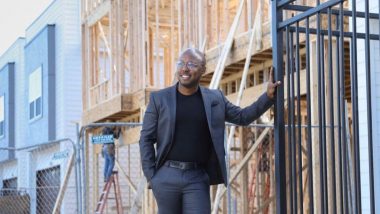Introduction
Nothing is permanent. Change devours the past with the present and the present with the future. However, whether it is good or not can be a subject to debate. One debatable topic that induces a huge change to the ambience of a particular community is gentrification.
What is Gentrification?
In simple terms, gentrification refers to the “development” of a particular area, generally a neighborhood or district. This kind of “development” generally consists of the arrival of people who are apparently wealthier in nature and bring a definite monetary value to that particular area. The term, however, is a sensitive one and brings along a negative connotation, which might involve the disposal of the character and culture of the poorer people from the area, to secure it for the wealthier incomers. In this article, we will have a look at one of the pioneers of gentrification in the modern world, Christopher Charles Senegal and how he has helped in bringing a change to the status quo gentrification experience.
The Solution
His first priority was finding a method to bring higher income people from the neighborhood back from the suburbs. Why? He believes begging and protesting for grocery stores and retailers to build and plant their businesses there isn’t a long-term solution. The bottom line is they need revenue to stay afloat. If the only focus is on low-income housing, low-income people will be the only ones there. That equates to a lot less revenue. The businesses that left will never return. The neighborhood becomes no man’s land to them. So by building attractive, market-rate properties in an area that was destined to experience gentrification, it can get those more attractive incomes back earlier, and populate it with people that have ties to the community. This also will lead to businesses coming back.
In 2013 he secured an entire block of blighted drug infested property in and ventured to turn it around. This process did not come easily. He was attempting to do what wasn’t done before. After building a solid team, getting a private investor, and creating a solid plan, he was still turned down by 23 lenders before the 24th agreed to fund that project in 2018. With the initial funding, the first three houses went into construction—with the intention of creating comparable sales data for more builds. To get these houses sold and to get more interested investors, there was a huge push on social media to spread the message of what he was doing. He knew that to prove this community-based model was possible, he needed brokers and agents from the community talking to prospects looking for homes, mortgage lenders making sure that everyone on his team was spreading the word to people headed for the burbs. It's working. He’s now in the second phase of fourteen townhomes, with a few left to sell.
Senegal also believes it is essential that throughout this revitalizing process, you must look out for the long-term residents of the neighborhood. In late 2019 he was presented with the opportunity to buy a package of rentals that are a few blocks from his new construction. Twenty properties in a small community that were for sale by one landlord. He knew that he had to buy them and create a way for the tenants to be able to sustain their way of life.
Some of the tenants have lived in these homes for almost two decades and preserving their standard of life amidst the new developments in that area was paramount to him. The entire portfolio (18 houses along with 2 commercial properties) was being sold for $1.5 million. This was formerly the most prominent business district in 5th Ward, the “Black Wall Street” of that area. In the past, it was where the black doctors’ offices, law firms, grocery stores, insurance companies, hotels, nightlife, and retailers were stationed—Lyons Avenue. Because the tenants who currently live in these rental properties are so stable, he knew that if he bought it there was no need to rush to raise their rents. The vacant commercial buildings provided the opportunity to increase the rental revenue following renovations.
After negotiations he was able to take on the properties at $1.25 million, and get the seller to finance $650,000. Even more phenomenal is that there is no payment on that part for the next two years. Giving him time to get two years of accounting records and tax returns for refinancing purposes. This made it a great project to do something he had been interested in trying, crowdfunding. He knew that buying a property that was cash flowing from day one would be beneficial to the model because the properties are already creating revenue and the dividends could be paid out quickly. He closed on the property in March and has already started upgrading made lots of repairs to roofs, floors, and plumbing. The tenants and surrounding community love the new look.
A high-end, mixed-use development is starting less than three-quarters of a mile away from the property. This development will include retail stores, restaurants, office buildings, hotels, condominiums, etc. The land value has the potential to double, potentially even triple within this area.
So far 685 investors have contributed over $400k in capital to be a part of this new approach to protecting long term tenants amid revitalization. Every investor will benefit from the increased rents and property values, while concurrently knowing they did great deeds for the residents.
If you would like more information about the project visit BuyTheBlock.com














 Quickly
Quickly




















